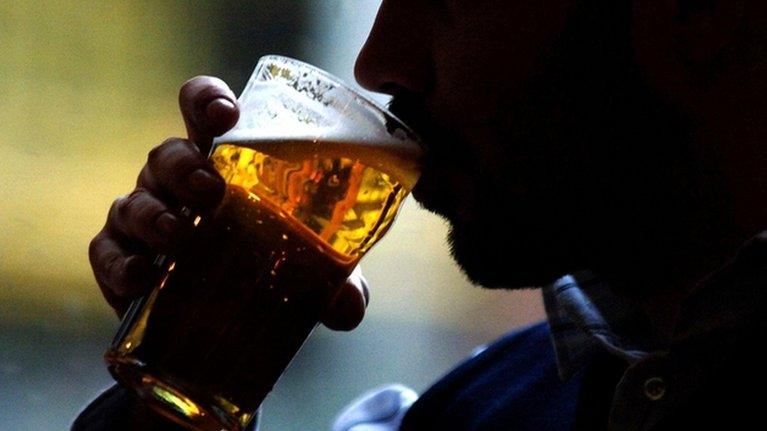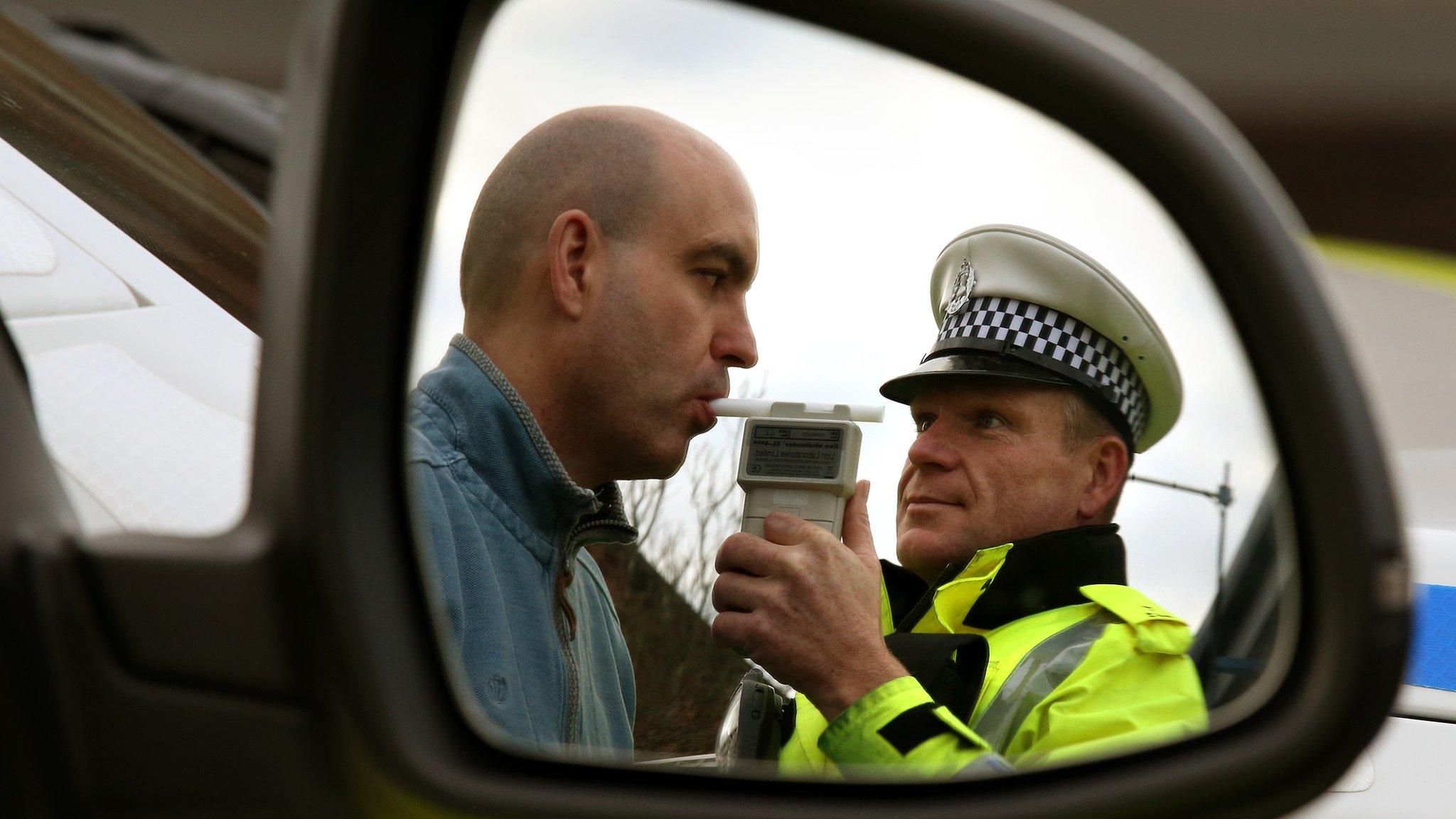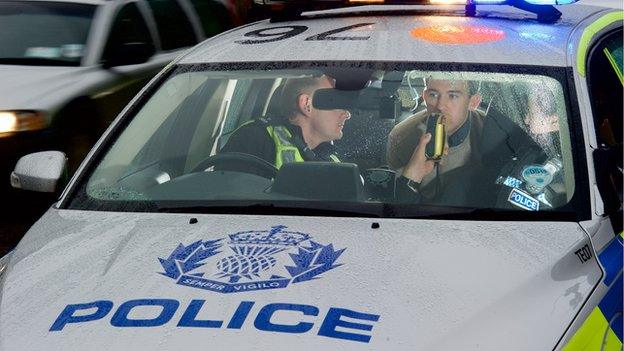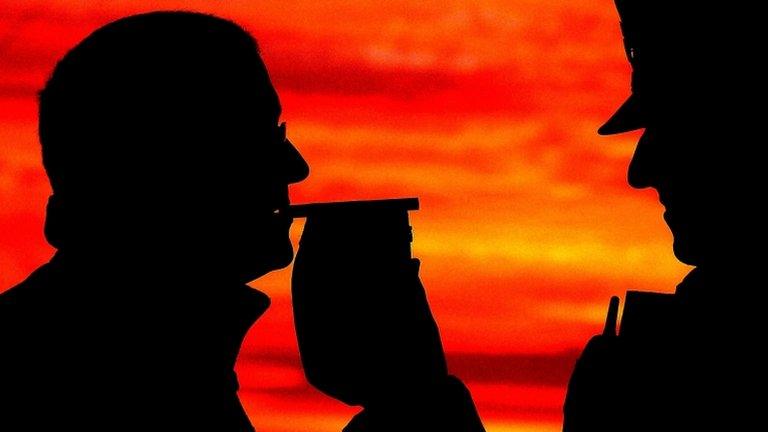Toxicologist warns drinkers to wait before driving
- Published
Forensic toxicologist Dr Hazel Torrance explains how Scotland's new lower drink-drive limit could affect drivers
Drivers should think twice about what they drink as the new lower alcohol limits come into effect, a forensic toxicologist has warned.
Dr Hazel Torrance said it would take a few hours longer for people on average before they would be able to drive the day after a night out.
The current drink-drive limit of 80mg of alcohol per 100ml of blood will be reduced in Scotland to 50mg.
It comes into force on Friday after midnight.
Dr Torrance, from the University of Glasgow, said alcohol affects every individual in different ways due to a number of factors including body weight, their sex and if they have eaten or not.
The expert also said a single pint of standard beer or a glass of wine "should" leave people under the new drink-drive limit, if they waited a few hours before getting behind the wheel.
Ms Torrance said: "Currently, you can probably drink a pint and a half of beer and maybe a large glass and a half of wine and you should be under the limit.
"With the new limit, that will be reduced to a pint of beer and a glass of wine."
Dr Torrance explained that, on average, it takes a person an hour to clear between 15mg and 18mg of alcohol per 100ml of blood.
Therefore, it would take a drinker an additional two hours of recovery to reach 30mg - the difference between the old limit and the new limit.
The toxicologist also said it is possible to be under the limit and impaired through alcohol, and advised people to not drink at all when driving.
She added: "Alcohol is processed through the liver and is excreted through the urine. There are average rates at which this happens, but that can vary depending on the individual and depending on the individual circumstances as well, such as whether they have eaten.

Drink-driving laws - the differences
The current UK limit is 80mg per 100ml of blood. Europe's highest. Only Malta shares the same limit
Northern Ireland is considering making the same reduction as Scotland - to 50mg of alcohol per 100ml of blood
A 50mg limit would mean an average man would be limited to just under a pint of beer or a large glass of wine and women to half a pint of beer or a small glass of wine.
The Czech Republic, Romania, Hungary and Slovakia have introduced a zero-tolerance policy
Germany has a 50mg limit - but for new drivers, the limit is 0.
Source: European Transport Safety Council

Asked if two people who drink exactly the same could record different alcohol levels, she added: "Yes. There are differences between individuals depending on their body weight, on their sex, on what concentration of alcohol they achieve and how quickly that is excreted. It is very individual-dependent.
"If they have been eating, then it tends to take longer to reach a maximum alcohol concentration in your blood."
And what message for people who will be out drinking this weekend? "I would think twice about what you are drinking," said Dr Torrance.
"Make sure you leave sufficient time between stopping drinking and driving."
Earlier this week, Scottish justice secretary Michael Matheson visited Dumfries and Galloway and Cumbria to highlight the new drink-driving limit north of the border.
Mr Matheson said the new limit will make Scotland's roads safer and save lives.
He said: "The evidence from the Republic of Ireland which has brought in the same lower limit suggests we will see convictions go down, reductions in drink driving and lower blood alcohol counts."
The Scottish Parliament voted unanimously in favour of the new law on 18 November.
- Published3 December 2014

- Published24 October 2014

- Published3 December 2014

- Published24 October 2014

- Published17 November 2014

- Published21 March 2013

- Published27 May 2012
